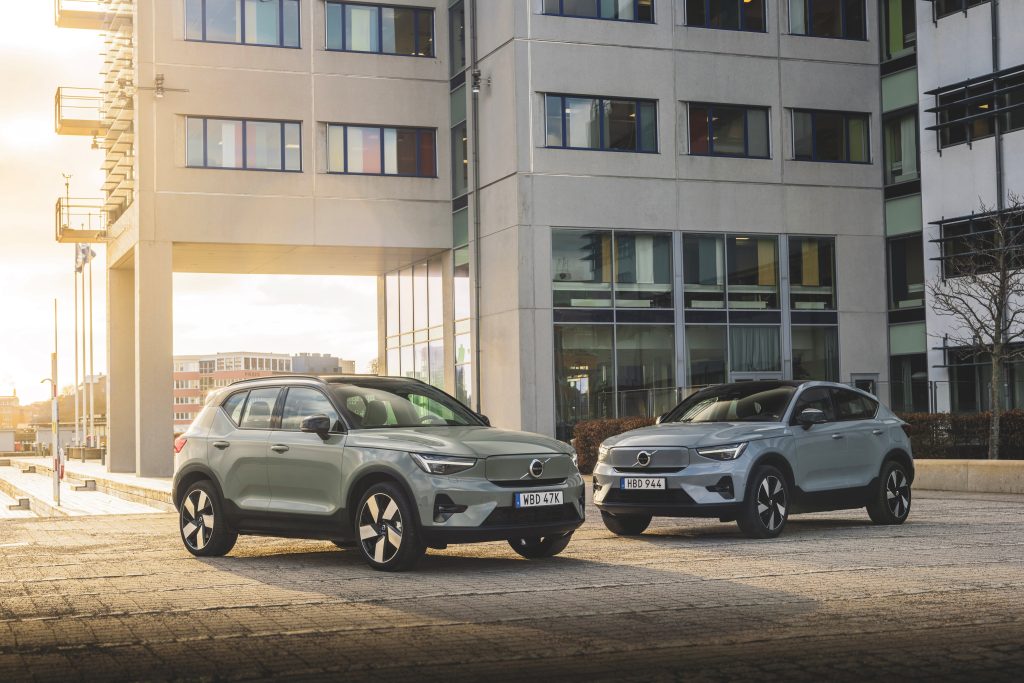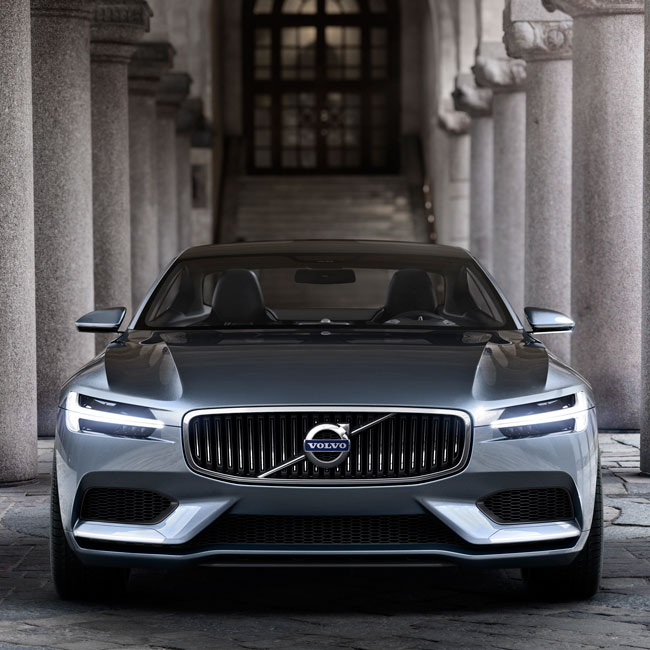Test Drive: 2024 Volvo XC40 and C40
The future of the Scandinavian auto brand looks very bright

For the majority of their history Volvo has primarily been known for two things: safety and simple design. Luxury was also part of the conversation, but a quiet and approachable kind of luxury. Volvos were sensible cars for sensible people, and even a great deal of success in European touring car racing thanks to performance tuner Polestar (before it was spun off as an EV brand) couldn’t change that perception. Then, in 2015 the second generation of the XC90 SUV arrived and for the first time since the P1800 of the 1960s, Volvo had a vehicle that was unequivocally attractive. The XC90 was an instant hit and in the years that followed, the rest of the Volvo family of vehicles received the same sleek Scandinavian styling.
Underneath the attractive exterior was the new Scalable Platform Architecture or “SPA” as Volvo dubbed it. SPA allowed Volvo to continue to prioritize safety while also taking a greater interest in efficiency by way of weight reduction and hybridization. With SPA underpinning their mid- and full-size car offerings, Volvo debuted their CMA (Compact Modular Architecture) platform with the XC40 compact SUV in 2017. Initially conceived for front-engine, front-wheel-drive and all-wheel-drive vehicles, the CMA platform has proven to be highly modular indeed as the 2024 XC40 and C40 are not only the first rear-wheel-drive Volvos in 25 years, but also offer the option of a single electric motor mounted at the rear of the vehicle.

Why offer a rear-wheel-drive vehicle after a quarter century of not doing so? Following our drive of both the 2024 XC40 and C40 Recharge, we found ourselves hearing a common theme from the Volvo engineers and designers who worked on the updated compact SUVs, and that theme was performance. However they made it clear they were not just saying performance in the sense of driving capability, but overall performance in the sense of the vehicle doing its job at the highest level on each and every outing.

There was no glaring issue to solve with the first runs of Volvo’s compact SUVs; they were well received at launch and have consistently sold well. However we were told that the teams behind them felt they could be even better, especially once the fully electric Recharge variants came to market. It’s a simple notion really, without an internal combustion engine that must be placed over the front axle, you’re free to experiment with placement of an electric motor, as well as which wheels its power drives.

Conversion to electric propulsion has allowed brands to reconsider vehicle dynamics, centers of gravity and weight distribution, which in turn allows them to reconsider the scourge that has been front-wheel drive. Think of the most yawn-inducing vehicles you’ve ever encountered, they all likely have one thing in common and that’s front-wheel drive. Does being able to toss the rear end of a compact crossover out when going around a corner automatically make it more interesting? Well it certainly doesn’t hurt.

Both the refreshed XC40 and C40 do ride noticeably smoother than the initial versions, but that’s down to changes to the damping and spring rates rather than the placement of Volvo’s new in-house electric motor over the rear axle. One effect of moving the motor to the rear certainly does have is improving traction, as we were told that the new vehicles are better in inclement weather than the previous internal combustion, front-wheel-drive models. Much to our surprise (and, honestly, our delight) we experienced atypical sunny spring weather while in Gothenburg and didn’t have a chance to test the dynamic traction control. Given the rigorous testing we know Volvo undertakes all over Scandinavia, we’ll take them at their word with regard to the benefits of the rear-motor, rear-wheel-drive setup.

As has been the case since Volvo launched the SPA platform (and effectively re-launched the brand under Geely ownership) improved efficiency is part of the overall performance equation. Replacing the 201-hp motors on the front and rear axle of the AWD Twin-Recharge models are a 255-horsepower version of the new rear motor and an equally new, albeit less powerful, 147-horsepower motor on the front axle. The front is only engaged as needed for traction purposes, which we were told is done to improve efficiency.

Translated to real world numbers that means up to 294 miles of range for the rear-drive XC40 and 297 for C40, thanks largely to a new 82-kilowatt-hour battery pack that can be charged at a maximum rate of 200 kWh. The twin-motor versions retain the outgoing models’ 78-kWh pack, but range still goes up by 31 miles to 254 for the XC40 and 257 for the C40.

Unfortunately, its fast charging rate still tops out at 150 kW. For customers looking for maximum efficiency when driving and when charging, that means the RWD models are the way to go. In fact, we’d say that for all but a select group of individuals who regularly encounter treacherous road conditions, the RWD models are a better choice. With Volvo going to a fully electric vehicle portfolio by 2030 and the debut of their in-house made electric motors, we’d expect that the 2024 XC40 and C40 are just the tip of the iceberg when it comes to rear-wheel-drive vehicles. Going electric opens up all sorts of packaging possibilities, which in turn gives vehicle designers much more space to get creative in.

We expect to see Volvo continue to evolve the excellent design language that debuted on the XC90 and started a new conversation about the Swedish brand, which will celebrate its 100th anniversary fours years from now. We’re especially confident in our expectations having been given the chance to get up close and personal with the forthcoming fully electric 2024 EX90 SUV while visiting Volvo’s HQ. The EX90 is an impressive evolution of everything that made the XC90 a runaway hit, but it debuts more than a few of its own defining elements that are sure to bring even more attention to Volvo when it arrives early next year. Having now sat behind the wheel of the flagship electric SUV that will be built at Volvo’s South Carolina plant we can say this much: as great as the present offerings are from Volvo, the future is looking very bright.
Images courtesy of Volvo












